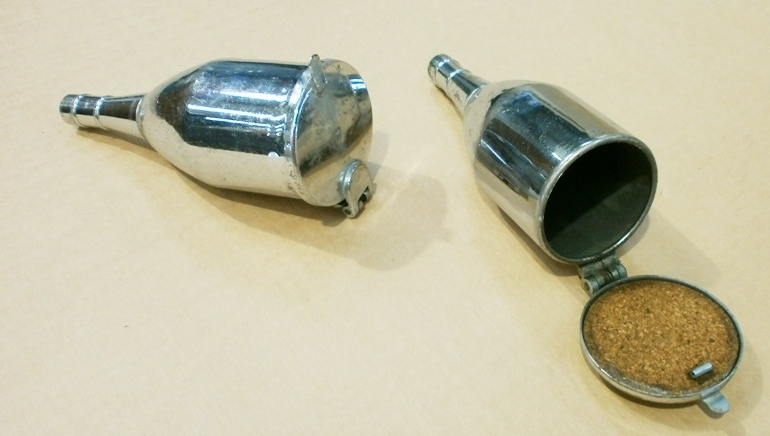Read the forum code of contact
By: - 13th July 2020 at 10:11 Permalink
Now that has to be a book waiting to be written - 'Flying Toilets of the Allied Air Forces 1939-45' and its sequel volume 'Aerial Urinals of the Axis Powers in WW2'. The only problem is that it would be bound to result in one seeing offered on eBay post-war Elsans claiming to be 'as used by Guy Gibson during the night of 16/17 May 1943'!
By: - 13th July 2020 at 21:20 Permalink
looks like its been DUMPED !!!
The had AM stamps on them so have a good look
By: - 13th July 2020 at 22:32 Permalink
There's a tale in Michael Bentine's autobiography (he was an RAF intelligence officer) about aircraft returning from Germany sans Elsans. Worth a read of you can find a copy.
By: - 14th July 2020 at 09:48 Permalink
You wouldn’t believe the conversations we had during the meetings about the design of the FEMALE urinals for the A400m.😂
By: - 14th July 2020 at 11:44 Permalink
What, you mean to say that Airbus didn't just fit heads up for'ard, Aeronut2019?
P.s. I think that Arado_234 deserves an apology, although I believe that it has been demonstrated amply that there isn't anyone on this forum with much, if any, knowledge concerning the sanitary facilities of WWII bombers.
By: - 14th July 2020 at 19:47 Permalink
What, you mean to say that Airbus didn't just fit heads up for'ard,
when it was realised that the female urinals stuck too far out into the cargo area and couldn't be stowed away, it was decided to "Just tell the girls to use the toilet cubicles under stairs up front".
By: - 15th July 2020 at 07:26 Permalink
There was an article about this very subject in Britain at War a few years back. This is what I remember. RAF medium and heavy bombers had an Elsan chemical toilet in the rear fuselage. The Mosquito had a urinal system consisting of a tank under the pilot's seat and a tube you could pee into so it was really just a urinal rather than a full toilet. The B29 had an Elsan type toilet in the rear fuselage. I don't think the B17 had an Elsan. The only WW2 aircraft to have a flushing toilet was the Short Sunderland which had a compact WC originally designed for use in yachts.
By: - 15th July 2020 at 14:37 Permalink - Edited 15th July 2020 at 16:31
Just been looking through the B17 manuals for another reason and was surprised to find the B17F having the item marked A on the fuselage.
By: - 15th July 2020 at 15:08 Permalink
This is the type of subject i love this forum for. a mundane sounding topic but some really interesting responses. I knew about the Mossies tube as saw the one being fitted in the museums FB VI but hadnt thought of others.
By: - 15th July 2020 at 17:05 Permalink - Edited 15th July 2020 at 17:09
totally agree 
By: - 15th September 2020 at 05:08 Permalink
Thanks for this lads, had a few cans and forgot I had posted it. I think one of the deciding factors was the catch, which only the aircraft toilets seem to have had, this was donated to the NELSAM in Sunderland.
By: - 15th September 2020 at 08:56 Permalink
In fighter cockpits they had the famous "relief tube". A pipe next to the seat to the outside world to pee in.
In bombers they had the one mentioned above. I was reading somewhere the typical "water" used to flush it at altitude was the remaining hot coffee in big thermos carried on long flights. Lavs would ice up frequently.
By: - 15th September 2020 at 11:40 Permalink
By: Spitzfeuer - 15th September 2020 at 08:56In fighter cockpits they had the famous "relief tube". A pipe next to the seat to the outside world to pee in.
Presumably (a) the pilot had to attach himself to 'relief tube' to avoid cockpit spillage and (b) the exterior end of the tube had to vent downwind. If so, at high speed did this not give rise to a vacuum at the vent end of the tube, creating suction in the tube that would have made it difficult for the pilot to detach the tube from himself? I wouldn't have thought that this seeming problem would have been overcome by the tube being permanently attached to the pilot as this would, in turn, have created problems for the pilot if he had to bale out (unless there was the equivalent of a 'weak link' in the tube so that it would break and come away under pressure). Does anyone know precisely how the system worked and how it overcame the potential difficulties highlighted?
By: - 17th September 2020 at 11:30 Permalink - Edited 17th September 2020 at 11:30
It looked like this but installed next to the pilot seat.
http://heroicrelics.org/wings-of-freedom/b-24-interior/dsc19083.jpg.html
By: - 21st September 2020 at 11:34 Permalink
Here are a couple of the real thing. Suggested Wartime RAF pee tubes, but no markings other than manufacturers stamp. They came in a job lot; so if you know better, please share.

By: - 21st September 2020 at 14:51 Permalink
Is it 'one size fits all'?

Posts: 2
By: Arado_234 - 13th July 2020 at 02:11 - Edited 13th July 2020 at 02:21
Strange question, but does anyone know anything about the toilets used in WWII bombers? Have been told this may be from a Halifax bomber decommissioned after WWII, some of which were converted into Handley Page 70 Haltons. Found a great article online about RCAF bomber toilets.